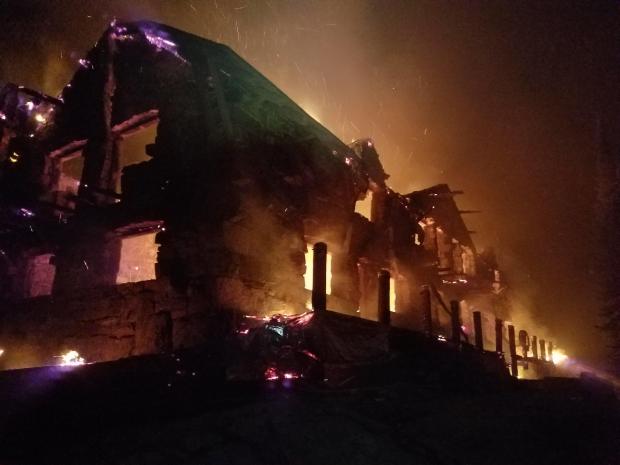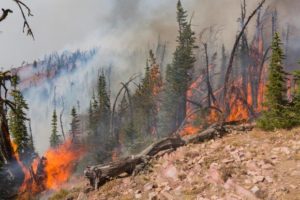
Wildfires continue to burn vast scars across the West, but the political blowback has already begun, with politicians from several states blaming environmentalists for the summer of 2017’s devastation.
But scientists at the National Weather Service and the U.S. Drought Monitor are clear about the conditions that sent this summer’s Western wildfire season into overdrive – even if they didn’t see it coming.
A “flash drought” seized Montana and the Dakotas in early summer, the experts say, brought on by sustained high temperatures and a dearth of rain.
They blame climate change, and warn that these type of events will only become more frequent as global warming deepens.
“This is as dry as it’s been in history,” National Weather Service climatologist Tanja Fransen told reporter Kathleen McLaughlin in a recent story for The Guardian. “A lot of people try to compare this to previous years, but you just can’t.”

McLaughlin continued:
Adnan Akyuz, the state climatologist for North Dakota, describes the unusual drought in terms that are reminiscent of descriptions of deluge brought on by Hurricane Harvey. “It is safe to say, we got into it very fast, which caught us off guard and we didn’t know it was going to continue,” he says.
Akyuz said that March through July was the third-driest five months on record in North Dakota since 1895, a dire situation impossible to predict given traditional methods of weighing snowpack with average seasonal temperatures to monitor for potential drought. But in the future, unpredictable may be the best prediction.
“We should expect these swings and incorporate these swings into our management plans,” said Akyuz.
Interestingly, the farmers and ranchers on Montana’s northern tier who’ve suffered losses this summer to both wildfire and drought-induced crop failures also cite climate change as the source of their woes.
But they’re also savvy about the politics already swirling around this summer’s blackened, withered acreages.
And many in the scientific community and general public understand the complexities of the West’s fire regime – and how land management and firefighting policies have affected the public’s forests over the past century.
There will, of course, be more and even louder debates over the root causes of 2017’s natural disasters – be they wildfires or hurricanes – in the months to come.
But McLaughlin’s reporting is a good launching pad for a more civil conversation. Here’s her full story.

I do appreciate the fact that this fire season and several in the past decade have been exacerbated by the impacts of the climate change cycle we are in. I am not sure about the “flash drought” notion, but for this comment, allow me to accept it on face value.
There is another critical aspect — actually there are two: lack of effective forest management and, thus, the inability to practice effective fire management.
On the National Forests, for example, we could easily harvest about 6 billion board feet (double the current harvest level) and begin to sustainably use more of the wood the is growing. Right now America grows about twice as much wood as it uses. Accordingly, our forests are getting clogged.
Also, we lack innovation and markets to more effectively use lower value wood; wood based nanotechnology is a prime example. By creating high-value, high-volume markets, we can create cost-effective ways to enable enough hazardous fuels to be removed from America’s forests so wildfires can remain smaller and begin again to be a tool for improved forest health as opposed to destructive behemoths that destroy lives, communities and landscapes.
So, with forests that are getting jammed up with too much biomass and the impacts of the current climate cycle that is causing excessive stress on the vegetation, improved and more aggressive forest management is key.
Better forest conditions enable trees, forests and forest ecosystems to become more resilient to disturbances, like wildfire and changing climate cycles. Currently, they (trees, forests and forest ecosystems) are not resilient to disturbances and large, destructive fires are commonplace. It does not have to be this way.
Our goal should to help create healthy, sustainable forests that are more resilient to disturbances so the linkage between environmental health and community stability can be more fully realized.
Excellent response.